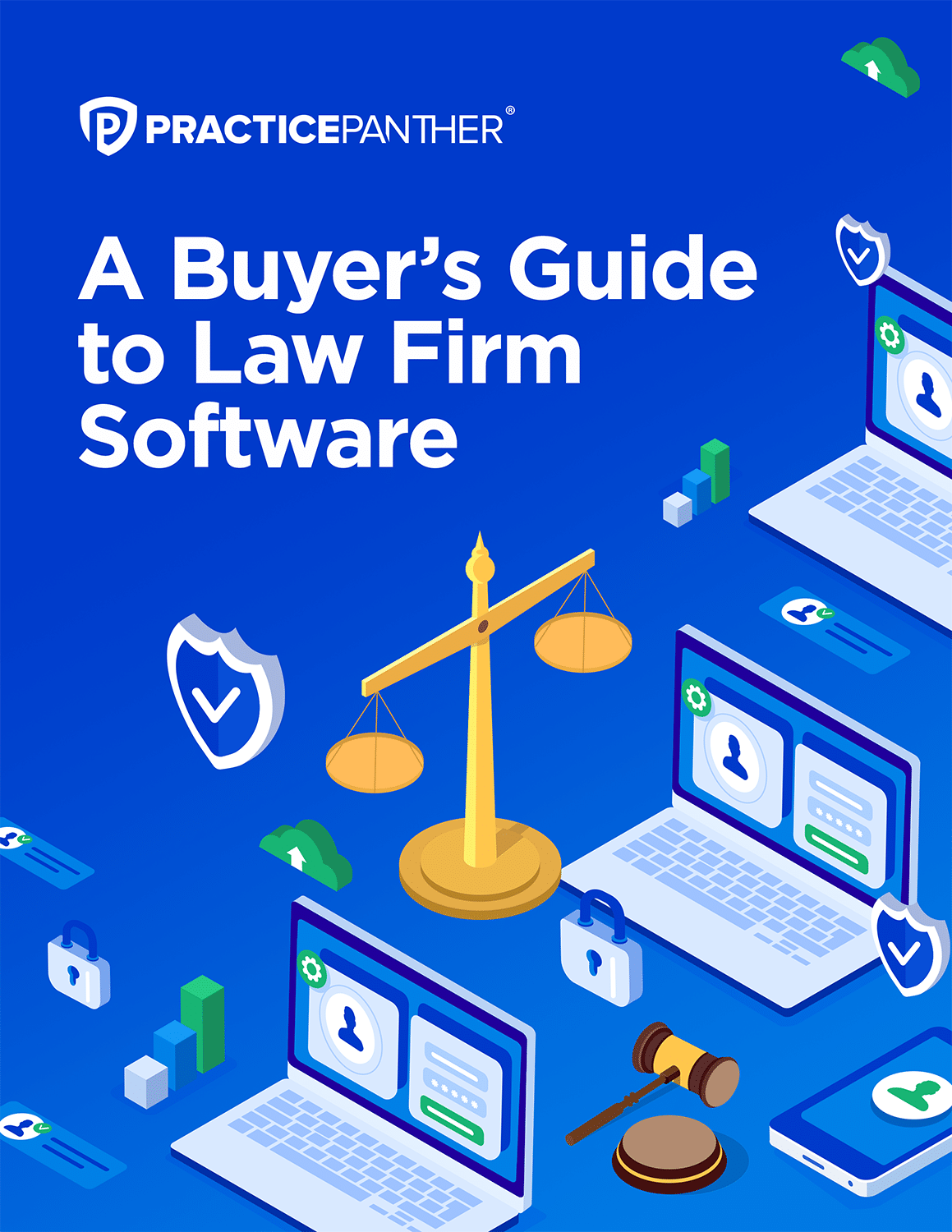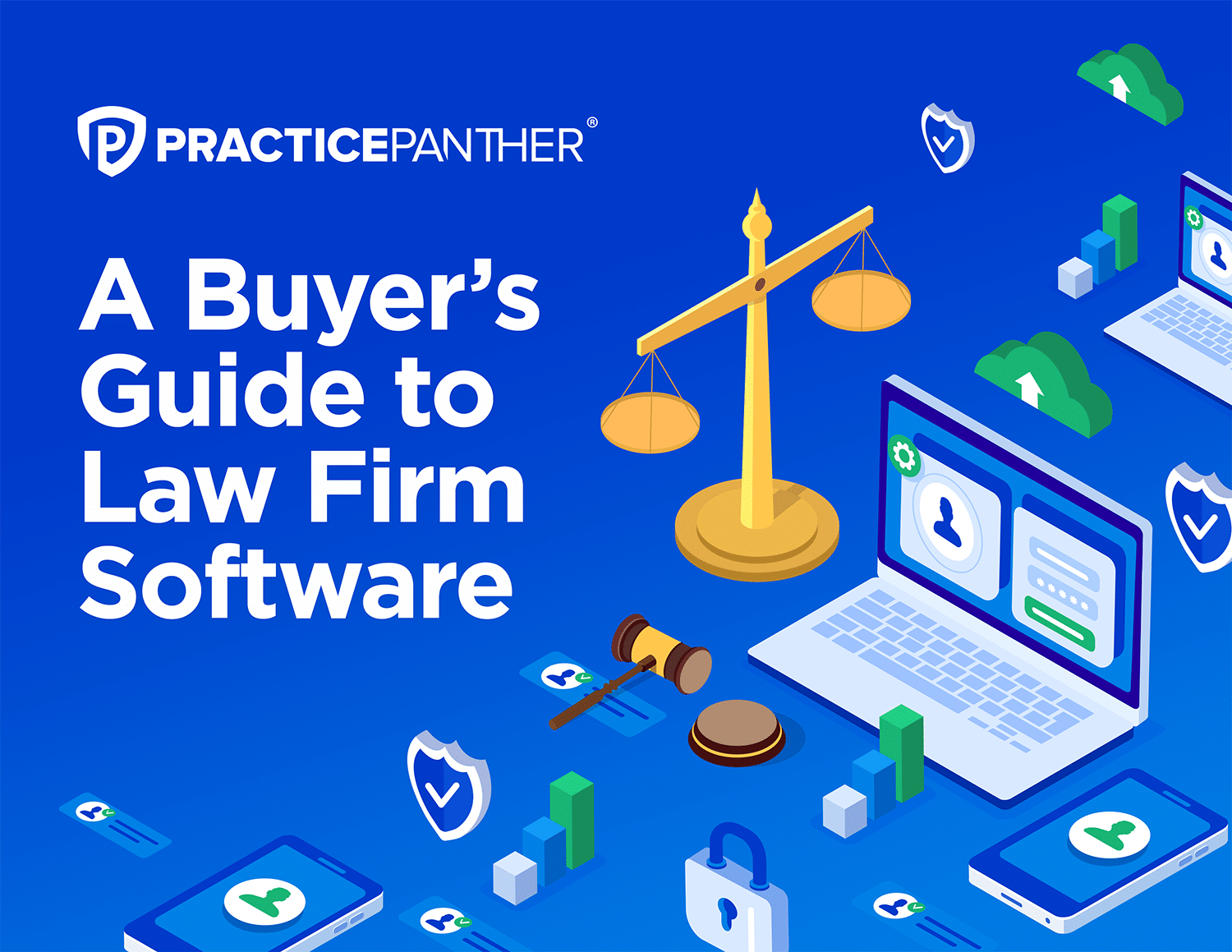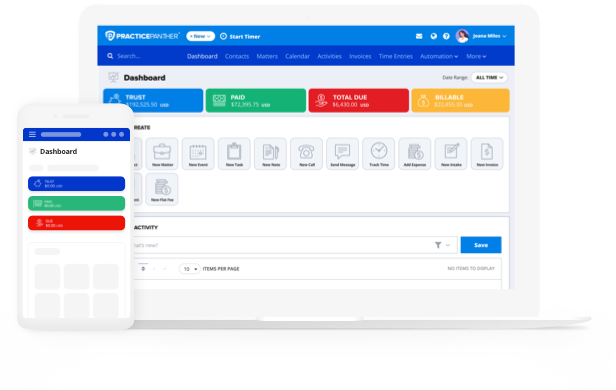As a law firm, building robust, long-lasting client relationships can be challenging. After all, networking, client engagement, and lead generation tactics can be time consuming. However, adapting to modern business development strategies and incorporating new technology can streamline these processes.
In this article, we’ll discuss how to make connections, set your firm up for a prosperous future, and integrate innovative tools so that your vision of your firm’s success can become a reality.
- What is Law Firm Business Development?
- Five Business Development Ideas for Law Firms
- How to Create a Law Firm Business Development Plan
- Law Firm Business Development vs. Law Firm Marketing
- Resources to Support Law Firm Business Development
What Is Law Firm Business Development?
Law firm business development refers to anything you do, intentionally and systemically, to generate your firm’s revenue and gain clientele. It focuses more on the big picture rather than smaller transactional tasks.
You may apply law firm business development strategies by:
- Taking on new practice areas
- Cross-selling to existing or former clients
- Expanding the geography of your practice
- Implementing a more robust client intake process
Constructing a business development plan requires time, reviewing data regarding your firm’s performance, staying up to date on trends in the industry, and keeping an eye on your competitor’s performance.

Five Business Development Ideas for Law Firms
Law firms of any size, practice, or location can use these law firm business development ideas to build their business:
Networking
When you hear “networking,” you may automatically think of attending happy hours or big legal conferences. That’s one way to do it, and it’s a good start. This way, you can feel more comfortable and make connections in a more relaxed environment. But don’t stop there.
After you’ve attended a few events and gotten the hang of how they work, it might be time to explore other ways to put yourself out there. You may want to base your approach on your clientele and practice area.
For example, if your clients are predominantly from the medical field or need health law related services, attend events that sponsor and host physicians. Should one of their patients need representation, a doctor you met at one of these events could direct them to you.
Online Forums
People with a common problem usually take to online forums to get answers to their questions. The conversation is a collection of posted messages, allowing multiple people to participate.
Drop into a forum and offer insights and advice to people seeking help. You might just land your next customer if you check out:
- Quora
- Social media groups
- Thomas Reuters Legal Community
- Bar Association forums
- The Lawyerist Community
- Law school alumni forums
- Slack
Referrals/Reviews
Some lawyers might avoid asking for referrals or reviews since they consider it free legal marketing. As long as you comply with the American Bar Association’s (ABA) guidelines, there’s no need to worry.
Referrals and reviews are a great lead generation strategy for law firms. Referred leads tend to have a higher conversion rate as they come from clients you’ve worked with and established a line of trust.
Client Engagement
Receiving leads and, ultimately, clients requires you to build strong personal relationships with your current clients. You can do this by being attentive to their needs, providing emotional support, and maintaining constant and clear communication.
As cliché as it sounds, put yourself in their position and ask yourself what you would want. Take the time to ensure they understand everything regarding their case. When you get an update on their case, let them know immediately.
Once the case resolves, ask them for feedback. Your proactivity and willingness to do better prove your dedication and care for them.
They’ll remember how you went the extra mile for them and may feel more inclined to share their experiences with their friends and family, who just may be your future clients.
Thought Leadership
Thought leadership increases brand awareness and is another avenue to convert leads into clients. In other words, what’s your niche? If one thing about your firm stands out, make sure your prospects know what it is. Showcase your expertise by focusing on the quality of the service or perk you can provide rather than the quantity.
If you’re a personal injury attorney, provide content about common mistakes people make when dealing with insurance companies. If you run an immigration firm, write a post or make a video on how the Green Card process goes step by step.
How to Create a Law Firm Business Development Plan
Creating a law firm business plan sounds intimidating, but when you break it down into simple steps, you’ll feel like you can do anything.
Define Measurable Goals
Start small, and list the goals you want to accomplish in the next year. This can look like reaching a broader clientele by taking on a new practice area or partnering with another lawyer. You may have specific revenue goals you want to achieve and want to better define your law firm’s finances.
Goals combine your firm’s performance and aspirations to create actionable, tangible achievements.
Create Actionable Strategies
As mentioned before, goals need to be tangible and elicit action. How will you achieve these goals? Some ideas for strategies are:
- Increasing visibility on LinkedIn or Facebook
- Attending networking events that are more clientele-based than colleague-based (See the doctor example above)
- Setting aside time to answer questions on social media or forums
Prioritize Your Goals
Prioritizing your firm’s goals will help you make actionable steps that you can measure and adjust along the way based on their performance. Overloading yourself with too many goals at once can be overwhelming and may be hard to track.
For example, if you want to build a presence on Instagram the most, take steps like:
- Converting your page into a business account
- Learning the different tools and which hashtags to use
- Deciding if you want to post photos, videos, or a mix
- Figuring out how often you’ll post both on your account and stories
- Leverage Instagram or Facebook ads
Your firm should aim to implement a set of goals over a defined period, likely on a quarterly basis.
Develop a Timeline To Test and Measure Performance
Goals are nothing without timelines or creating processes to track them. You’ll want to set a cadence, pull reports, and gauge revenue generation. This way, you can see what’s working and what isn’t.
Law Firm Business Development vs. Law Firm Marketing
Law firm business development and legal marketing tend to go hand-in-hand, but there is a distinction.
Digital marketing, such as Google advertising or pay-per-click (PPC), can generate immediate revenue.
In business development, your focus is still generating revenue, but it’s less of a focus on selling. Instead, it’s about building your firm and relationships and setting up revenue streams with the long-term end goal in mind.

Resources to Support Law Firm Business Development
Investing in law practice management software can help maximize your firm’s business development and marketing. With PracticePanther, your firm has access to native resources to effectively attract and retain more business, including:
- CRM: From lead to closed business, easily collect and store important client data in PracticePanther’s legal crm. Use this information to populate documents, create audience lists for email marketing campaigns, and more!
- Custom tags: Easily track where leads came from with tags that can be customized to your firm’s liking. Create custom tags for “LinkedIn Ads” or “Website” to track the performance of a campaign. Then, you can easily filter your tags and generate reports to identify which marketing tactics don’t work for your firm.
- Email management: Use PracticePanther to automate your firm’s email marketing. Once a contact is created in PracticePanther, you can use the MailChimp integration or another email automation tool to sync to your email contact list. Having a space with all the information on one platform can save you time from bouncing back and forth from different websites.
- Client intake: Streamline the onboarding process with automated client intake forms. Add custom fields to capture the information your firm needs and add your logo. Embed intake forms on your website and email signature so clients can contact your firm from anywhere. Once a client’s information is captured, it automatically syncs to PracticePanther as a contact, so you always have the record. (Yes, you can even tag them!)
- Integrated legal calendaring software: Easily keep track of deadlines, appointments, court dates, and meetings with a built-in calendaring system. Sync your Google or Outlook calendars to PracticePanther to keep track of your events, meetings, and tasks in one place without double entry.
Use These Tips To Effectively Invest in Your Firm’s Profitability
By adopting modern business development strategies and adopting legal-specific software, your firm can increase its visibility, generate more new business and enhance client satisfaction.
As we’ve discussed, goals are nothing without processes to measure them. PracticePanther helps firms manage all aspects of their practice from business development to legal case management in one place.





